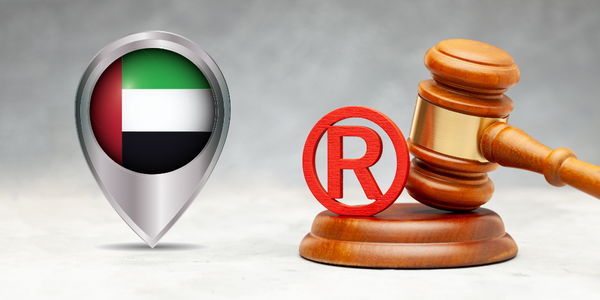Luxury, Lifestyle, and Opportunity: Middle East’s Fashion Revolution

The Middle East is leading a fashion evolution! Long regarded as a region of deep tradition and cultural richness, it is now stepping confidently into the global fashion spotlight.
From luxury retail to emerging local designers, the Middle East is reshaping the rules of style, blending heritage with high fashion and turning the desert into a runway.
Let’s tap into this trend and explore how D2C and online businesses can ride the wave of this fashion revolution.
A Region with Taste and Spending Power
Luxury is nothing new to the Middle East. Cities like Dubai, Riyadh, Doha, and Kuwait City have long attracted international brands. High-end malls gleam with flagship stores from Chanel to Gucci.
But what’s changed isn’t how much people are spending, it’s where and why.
Consumers in the region, especially millennials and Gen Z, are becoming more discerning. They are not just buying labels; they’re investing in identity, in meaning, in craftsmanship. They want fashion to reflect their values—be it sustainability, cultural authenticity, or innovation. And this shift is creating a huge opportunity.
The Rise of Regional Designers
One of the most exciting developments in the Middle East’s fashion scene is the rise of homegrown talent. Designers like Huda Al Nuaimi, Reemami, and Yousef Aljasmi are no longer regional secrets. They’re showcasing in Paris, London, and New York. Their work carries a distinctly Middle Eastern aesthetic, but with a global attitude.
This new guard is redefining what luxury means in the region. The trend is now shifted to about exclusivity and storytelling. A kaftan becomes a symbol of modern modesty. A metallic abaya speaks to futuristic femininity. A hand-beaded gown reflects both heritage and haute couture.
Platforms Fueling the Growth
The digital landscape has become a major catalyst. Social media platforms, particularly Instagram and TikTok, have given regional designers a stage and an audience. A single well-styled post can launch a label into viral fame.
Influencers like Karen Wazen, Dana Hourani, and Rania Fawaz are running trends, shaping opinions, and building bridges between the East and the West.
E-commerce, too, is booming. Platforms like Ounass and Namshi have proven that there’s a strong appetite for curated, luxury-driven online experiences tailored to the Middle Eastern shopper.
Modest Fashion Goes Mainstream
Modest fashion, once a niche segment, is now a global trend, and the Middle East is at its core. Designers here understand modesty not as limitation, but as opportunity.
Loose silhouettes, rich textiles, and detailed embellishments are part of a fashion language that resonates far beyond the region. Major global brands have taken notice. Nike introduced a performance hijab. Dolce & Gabbana launched an abaya collection.
What’s important, though, is that this is more than a marketing move. It’s a recognition of a powerful cultural and economic shift, one largely influenced by the Middle East’s demand for representation and respect.
Government Support and Vision
Governments across the Gulf are recognizing fashion as a serious industry. For example, Saudi Arabia’s Vision 2030 is investing heavily in cultural sectors, including fashion.
The establishment of the Saudi Fashion Commission and events like Riyadh Fashion Week are evidence of a growing commitment.
In the UAE, initiatives like Dubai Design District (d3) and the Arab Fashion Council have created hubs where creativity meets commerce. These are ecosystems designed to nurture talent, attract investment, and generate global visibility.
A Lifestyle of Fusion
Luxury in the Middle East is layered. It’s visible in curated homes, personalized cars, and couture wardrobes, yes. But it’s also about quiet confidence and cultural pride.
The fashion industry here is deeply connected to lifestyle, where tradition blends with innovation. It’s not uncommon to see a woman in a Dior abaya stepping out of a Bentley, with a smartwatch on her wrist and AI-powered shopping apps on her phone.
This synthesis of old and new, of East and West, is what makes the Middle Eastern fashion identity so magnetic.
Challenges on the Runway
Of course, the journey isn’t without hurdles. Sustainability remains a concern, particularly in a region where fast fashion still thrives. There’s also the challenge of balancing global trends with local sensibilities. For some designers, it’s a tightrope walk between staying authentic and remaining commercially viable.
But these challenges are not stopping progress. In fact, they’re prompting deeper conversations around purpose-driven design, ethical manufacturing, and regional empowerment.
The Future: Fashion as a Force
The Middle East’s fashion revolution is changing closets and shifting mindsets. It’s creating jobs, empowering women, and telling stories that were once ignored by mainstream fashion. It’s proving that luxury doesn’t have to come from Paris or Milan, it can be born in Jeddah, bloom in Beirut, and shine in Sharjah.
The region is no longer looking to fit into global fashion. It’s rewriting the rules. And the world is watching closely.
Ready to Be Part of the Middle East’s Fashion Revolution?
The region is redefining global style, blending luxury, culture, and digital-first consumerism. But breaking through takes more than a great product. It takes local insight and the right market entry.
At Click2MENA, we help fashion brands tap into this momentum with strategies built for real growth.
Call our experts or get in touch today to start your brand’s journey in the region.




